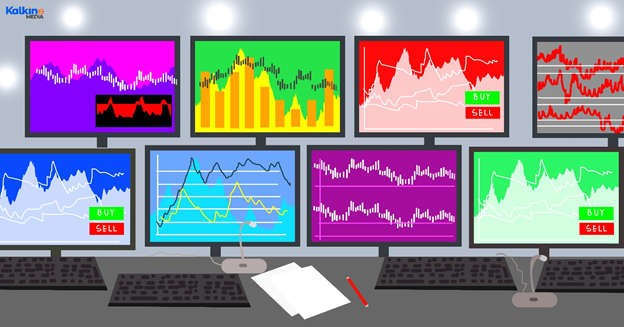What is Pattern Day Trader (PDT)?
A pattern day trader (PDT) is a defined title or regulatory designation given to traders who execute or perform four or more day trades in a span of five business days via a margin account. During the window of five business days, the day trades’ number must account more than 6% of total trade activity of the margin account. If this happens, an account of a trader will be flagged as a pattern day trader (PDT) by its broker. The pattern day trader (PDT) designation put specific limitations on further trading. This designation is levied to restrict investors from doing excessive trading.
Summary
- A pattern day trader (PDT) refers to a regulatory designation for the traders who do or execute four or more day trades during the period of five business days through a margin account.
- If a person executes four or more day trades in consecutive five business days is considered as pattern day trader (PDT), and these trades make up above six percent of a borrower’s account activity within the same five business days.
- The Pattern Day Trader (PDT) designation is regulated or determined by the Financial Industry Regulatory Authority (FINRA).
Source: Copyright © 2021 Kalkine Media
Understanding Pattern Day Trader (PDT)
If a person executes four or more day trades in consecutive five business days is considered as pattern day trader (PDT), and these trades make up above six percent of a borrower’s account activity within the same five business days. There are various kinds of traders, but mainly two kinds of traders are mainly focused on the pattern day trader (PDT), including Self-identified day traders and Pattern day trading violators. The Self-identified day traders refer to the traders who are day trader in actual that means broker of these traders are fully aware that they execute day trade and easily meet the PDT rule, minimum requirement of maintain an amount of US $25,000 in their account.
Pattern day trading violators refers to the traders who execute day traded in violation of PTD rule that means without meeting the minimum requirement of maintaining US $25,000 in their account. Day trading defines as the process of buying and selling the security or selling then purchasing the same security on the same day. Only buying a security without selling it later the same, will not count as day trader.

Source: Copyright © 2021 Kalkine Media
Frequently Asked Questions (FAQs)
Who regulates Pattern Day Trader (PDT)?
The Pattern Day Trader (PDT) designation is regulated or determined by the FINRA. FINRA stands for Financial Industry Regulatory Authority (FINRA), regulates member brokerage firms and exchange markets. Financial Industry Regulatory Authority (FINRA) establishes or sets a pattern day traders rule is that traders need to have at least US $25,000 in their brokerage accounts, it can be a combination of eligible securities and cash to reduce the risk. A trader is not able to complete the day order if he or she has a below US $25,000 in its account until the balance requirement will back to the point. This requirement is known as PTD rule or Pattern Day Trader rule. These rules are established as per an industry standard, but brokers or dealers may have more limitations of them, and sometimes they permit an investor to self-identify as day trader.
When is a trader’s account flagged?
An account of a trader will be flagged by brokers automatically as a flag pattern day traders. These are the traders, who do four or more day trades during five business days, provided that the number of day trades shows more than 6% of the total trades of a customer margin account for the same duration of 5 business days. It is a minimum requirement rule, and there are some dealers or brokers who use broader definition to find out whether a trader or investor is qualified as a pattern day trader or not.
A trader should not be concerned if he or she is flagged as a pattern day trader, but a trader will face specific limitation or requirements. A trader who has minimum US $25,000 in its account and trade in margin accounts only can be designated as a pattern day trader under the rules of Financial Industry Regulatory Authority (FINRA). If a trader’s account below the requirement the trader is not allowed to execute the day order until its account is restored to minimum equity level of US $25,000.
 Please wait processing your request...
Please wait processing your request...